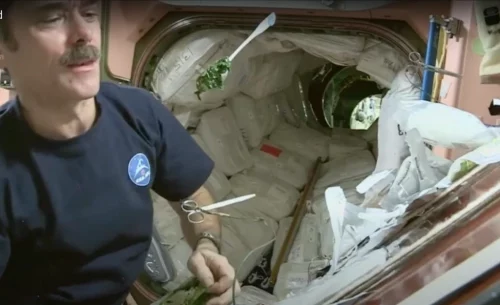Lab-grown food in orbit adds momentum to 3D-printed seafood movement.
A European Space Agency experiment launched this week is exploring the feasibility of producing lab-grown food in orbit — a development that mirrors growing interest in cell-cultivated and 3D-printed seafood on Earth.
The experiment, led by UK-based Frontier Space in collaboration with Imperial College London, involves a microbial bioreactor designed to cultivate protein-rich material in microgravity. The system was sent into orbit aboard a SpaceX Falcon 9 rocket, with the aim of supporting long-duration space missions by reducing reliance on Earth-based food logistics.

The trial comes as 3D-printed seafood continues to gain commercial traction. In April 2024, Israeli firm Steakholder Foods announced the US launch of its plant-based, bio-printed salmon, developed using proprietary Drop Location in Space (DLS) technology. The product replicates the texture and taste of traditional salmon and has been cleared for use under the US Generally Recognized as Safe (GRAS) framework.
Steakholder Foods’ SHFish and SHMeat product lines are designed to meet rising demand for environmentally sustainable and alternative protein solutions. The company’s technology, which uses protein-based “inks” to recreate meat and fish structures layer by layer, is being positioned for integration into existing food manufacturing environments.
The concept of seafood in space is not new. In 2018, Canadian astronaut David St-Jacques brought smoked salmon from Quebec’s Monsieur Émile Smokehouse aboard the International Space Station, highlighting the product’s popularity as a morale-boosting food choice among astronauts.
While the ESA experiment focuses on microbial precision fermentation, researchers see future potential in combining cell-grown proteins with food printing technologies to create customised meals in orbit. A second, larger bioreactor system is scheduled for launch in 2026.
Both space-based and terrestrial developments signal a broader shift toward cultivated proteins in environments where traditional seafood production is not viable — whether due to cost, sustainability constraints, or the absence of oceans entirely.


